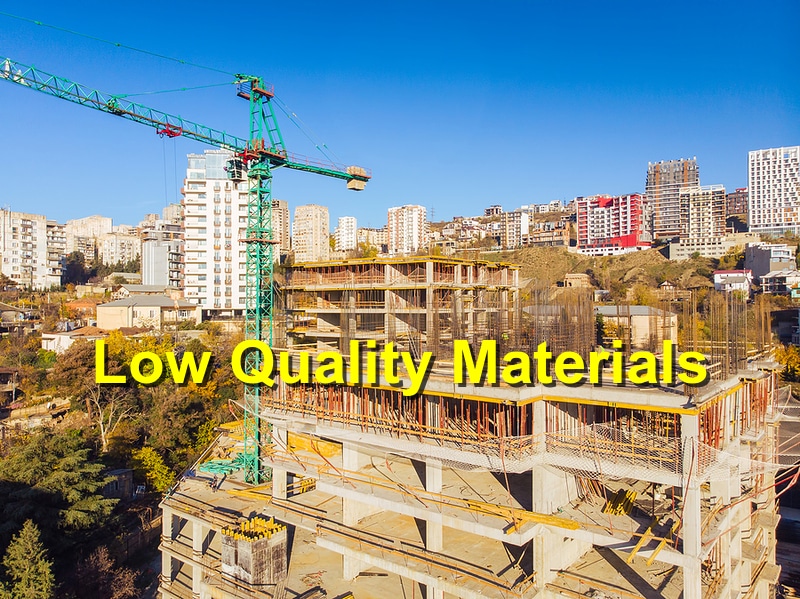Poor construction materials are materials that are of low quality or are not suitable for use in construction. These materials may not be able to withstand the stresses and loads that are placed on them during construction, and as a result, they can fail or deteriorate quickly. Examples of poor construction materials include substandard concrete, faulty wiring, and inferior roofing materials.
As much as you may be tempted to go for substandard materials during construction, you should steer clear of low quality paraphernalia. You see, poor construction materials can precipitate a variety of problems in a building or structure. For starters, poor quality materials may not be able to withstand the load and stress placed on them, leading to structural issues such as collapsing or cracking. Secondly, poor quality materials may not be as durable as higher quality materials, leading to a shorter lifespan for the building or structure. Furthermore, using poor quality materials can also pose safety hazards, such as the risk of fire or electrical issues. Not to mention poor quality materials may not look as attractive as higher quality materials, leading to a lower overall appeal of the building or structure.
In case you are wondering, skimping on quality in construction can have a number of negative consequences in both the short run and in the long term. Here is a quick breakdown.
- First, using low-quality materials or construction methods can result in a poorly built structure that is prone to failure or damage. This can lead to costly repairs and safety hazards, such as collapsing walls or roofs, electrical fires, or other problems. In other words, while it may look like you are saving a tidy bit of cash upfront, you are likely to incur more losses in the future when the effects of poor workmanship catches up on you.
- Second, using low-quality materials can also negatively impact the energy efficiency and sustainability of a building. For example, using low-quality insulation or windows can result in higher heating and cooling bills, as well as increased greenhouse gas emissions. This will not only cost you more money but it is also not great for our environment.
- Third, using low-quality materials or construction methods can also lead to customer dissatisfaction and loss of reputation for the builder or contractor. Customers who are unhappy with the quality of their homes may be less likely to recommend the builder to others, which can hurt the builder’s business.
Overall, skimping on quality in construction can have serious consequences for the safety, performance, and reputation of a building. Besides, using poor construction materials can lead to a variety of problems, including structural failures, safety hazards, and costly repairs. It is important to use high-quality materials in construction to ensure the durability, safety, and reliability of the finished structure.




